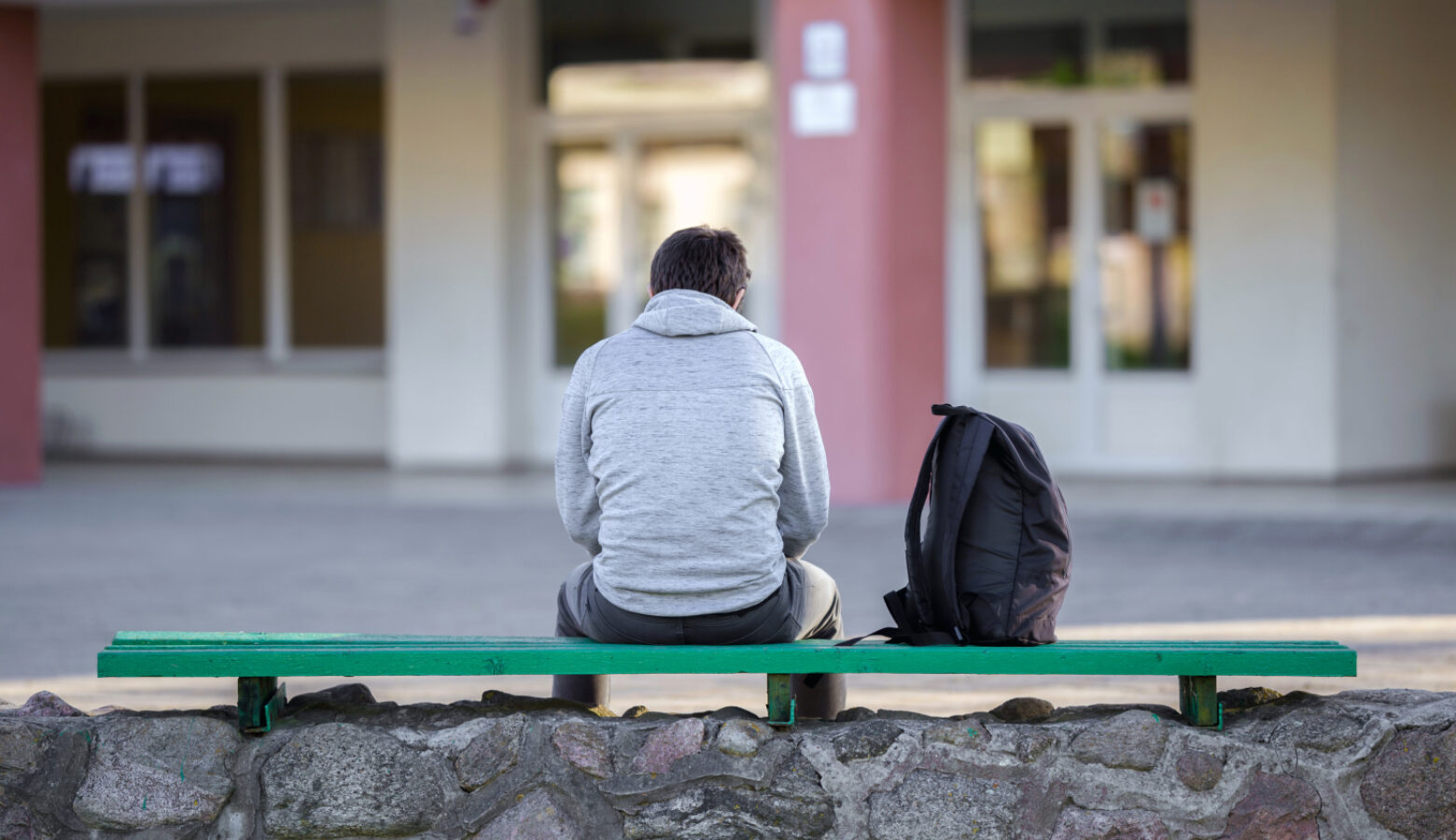Indiana schools suspended students more than 30,000 times for fighting last year

Last school year, about 72,700 public school students — or nearly 7% of those enrolled — experienced out-of-school suspensions. That was lower than the peak the prior year, but remains higher than before the pandemic. State data obtained by WFYI show that the increase was largely driven by more suspensions for fighting and drug-related offenses.
The data also reveal stark disparities. Black students were suspended more than three times as often as their white peers, while students with disabilities were removed from school more than twice as often as those without.
This is the first story in a series investigating school discipline in Indiana. WFYI spoke with more than 50 students, teachers, parents, advocates, attorneys and experts about the rise in out-of-school suspensions since the pandemic.
Students said they were suspended for a range of reasons, including physical fights, vaping and threatening peers. Parents of children with disabilities said teachers allow minor conflicts — over things like where students sit and whether they can have snacks — to escalate into meltdowns. And educators said students are more violent and disruptive now.
“The world is kind of stressed right now — the tolerance level of teachers and administrators may be at an all-time low,” said Chrystal Hines, founder of Inner Beauty, which provides mentoring and other support to girls. “And on the other side of it, some of the things that the youth are doing are a lot more egregious than they have been in the past.”
Hines said that data should be looked at “aggressively” because the increase in suspensions is a red flag that schools are struggling to support vulnerable students. “What are they doing while they’re not in school?” she added.
WFYI asked spokesperson Courtney Crown if the Indiana Department of Education and the Indiana State Board of Education are concerned about the increase in suspensions and what steps the state is taking to address it. She did not answer those questions.
Instead, Crown wrote in an email that “student discipline is at the sole discretion of the local school district.”
“While IDOE provides guidance, there are not universal definitions for discipline violations in state statute and therefore the application of policy varies from district to district,” she continued.
Under the radar
Indiana’s top education officials have not prioritized the increase in suspensions. The Indiana State Board of Education, which oversees K-12 policy, has not discussed the rising discipline numbers in its public meetings, according to a WFYI review of minutes going back to 2021.
Suspension rates are also left off a key tool for accountability: the state education dashboard. Officials have promoted the dashboard as a way for educators, families and employers to track schools. It includes metrics like test scores and graduation rates but not suspension.
The state publishes the number of suspensions on a separate website to comply with federal law. But that requirement could be changed as President Donald Trump’s administration moves to reduce federal involvement in education.
For parents and advocates, the best source of suspension numbers is a website published by the Richard M. Fairbanks Foundation. Based on state data, it shows how many students were suspended each year since 2011.
The Indiana Department of Education provided WFYI with detailed incident-level records that show the reason for each out-of-school suspension as well as student demographics.
Black students and students with disabilities bear the brunt of these disciplinary actions. Last academic year, schools removed Black students at a rate of 32 out-of-school suspensions per 100 students — compared to just 9 per 100 White students.
Among children and teens with disabilities, there were 25 out-of-school suspensions per 100 students — compared to just 10 per 100 students in general education.
In interviews with WFYI, many parents of children with disabilities said that disorders such as ADHD and autism made it difficult for their children to regulate their emotions, and schools often suspend them as a result.
Why are suspensions up?
Students missed out on both academic instruction and socialization during the pandemic. Educators believe technology also contributes to misbehavior. Social media can fuel student fights in schools and research has found that screen use is associated with behavior problems.
Indiana teachers say that in the wake of the pandemic, students get frustrated more easily and are worse at handling conflict with classmates.
“I just feel like students have a lot less patience with each other than they did before the pandemic,” said Ronak Shah, a middle school teacher in Indianapolis.
Shah believes students are struggling because they have less practice managing social conflict. At the same time, they are frustrated because they are behind academically.
“When a student says something to set them off, it’s much easier to lash out at another student than to lash out at a teacher because you know the consequences on some level won’t be as bad for that,” Shah said.
Second-grade teacher Chatlin Pearson said that even the students in her classroom, who were not in school when the pandemic started, are struggling to interact and problem solve with each other.
As young kids, her students probably spent more time on screens and had fewer experiences out in the world, Pearson said. “Even though they were really little, it still impacts their development.”
Nationally, over 70% of educators said that students misbehave more often than before the pandemic, according to a 2024 Education Week survey.
Liz, a veteran Indianapolis teacher who declined to use her full name because she’s concerned about retaliation at work, said that while elementary school classrooms in her district used to have one or two students who experience “huge outbursts,” now they have a handful.
Educators feel overwhelmed, Liz said. “It’s almost like there’s a water burst and you’re trying to plug up every hole, but you plug up one hole and another one pops up.”
Behind the numbers
Indiana public schools had nearly 13 suspensions for every 100 students last academic year. The state has 25 categories of behavior that can lead to suspension.
Fighting is the most common reason why schools suspend students, followed by “other” and defiance.
Suspensions for fighting increased by more than 20% last school year compared to 2018-19. But “fighting” includes a broad range of incidents, from high schoolers who plan and film fights to elementary school conflicts.
The pros and cons of suspensions
The increase in suspensions could have consequences. Students who are suspended are absent more often, do worse academically and are less likely to graduate from high school.
In interviews with WFYI, parents of children with disabilities said they had lost their jobs because their children were frequently suspended. Students described how repeated suspensions led them to transfer to new schools or move to virtual education. Others eventually stopped attending school altogether.
Most students said that suspension did nothing to discourage them from misbehaving in the future.
“Suspension, it’s like, is not really helping,” said one Indianapolis student. “They just make you go home for a few days. They are actually just giving us a break from school.”
“I didn’t really think about it that much,” said another student, recalling a time when she was suspended in kindergarten. “To me it was just days off of school. I didn’t have to go to school.”
In heated moments, suspension can serve a purpose by removing a student from the environment, said Rutgers University-Newark Professor Eddie Fergus, who works with schools to improve discipline.
But it won’t change student behavior in the long-term because it does not address underlying issues that are causing students to act out.
“If we don’t deal with those issues, that behavior is going to show back up again and again and again,” Fergus said.
But many educators said that suspensions are necessary to maintain safety and show that violence is not acceptable in schools.
Evidence on whether suspending students helps their peers is mixed, said NaYoung Hwang, an assistant professor at the University of New Hampshire who studies school discipline.
A study Hwang conducted found that in a school system where suspension rates were low to begin with, suspending students led to higher math scores for their classmates. In other words, removing disruptive students seemed to help their peers learn.
But other studies suggest that exclusionary discipline may harm overall school climate A study in Kentucky found that when schools suspended students more frequently, overall academic outcomes were worse. Another found test scores and attendance slightly improved when Chicago schools reduced suspensions.
“Excessive suspension may harm the learning environment yet using suspension as a last resort can help establish higher expectations, leading to less disruptive learning environments,” Hwang wrote in an email.
Elkhart father Mark Datema has a complicated perspective on suspensions. He spent years working with youth in schools and in residential treatment. Suspending the students with disabilities that he worked with was counter-productive, he said, because they fell behind academically and that resulted in more behavioral problems.
But when his daughter was in first-grade two years ago, Datema said she was repeatedly bullied by another student, who punched, kicked and scratched her. Eventually the other student was expelled. But Datema said the school let the behavior go on too long.
“I have compassion,” Datema said. “But I also know you do have to draw a line in the sand and say, ‘this is as far as we go.’”
The Richard M. Fairbanks Foundation is among the financial supporters of initiatives based at WFYI.
Contact WFYI education reporter Dylan Peers McCoy at dmccoy@wfyi.org.


